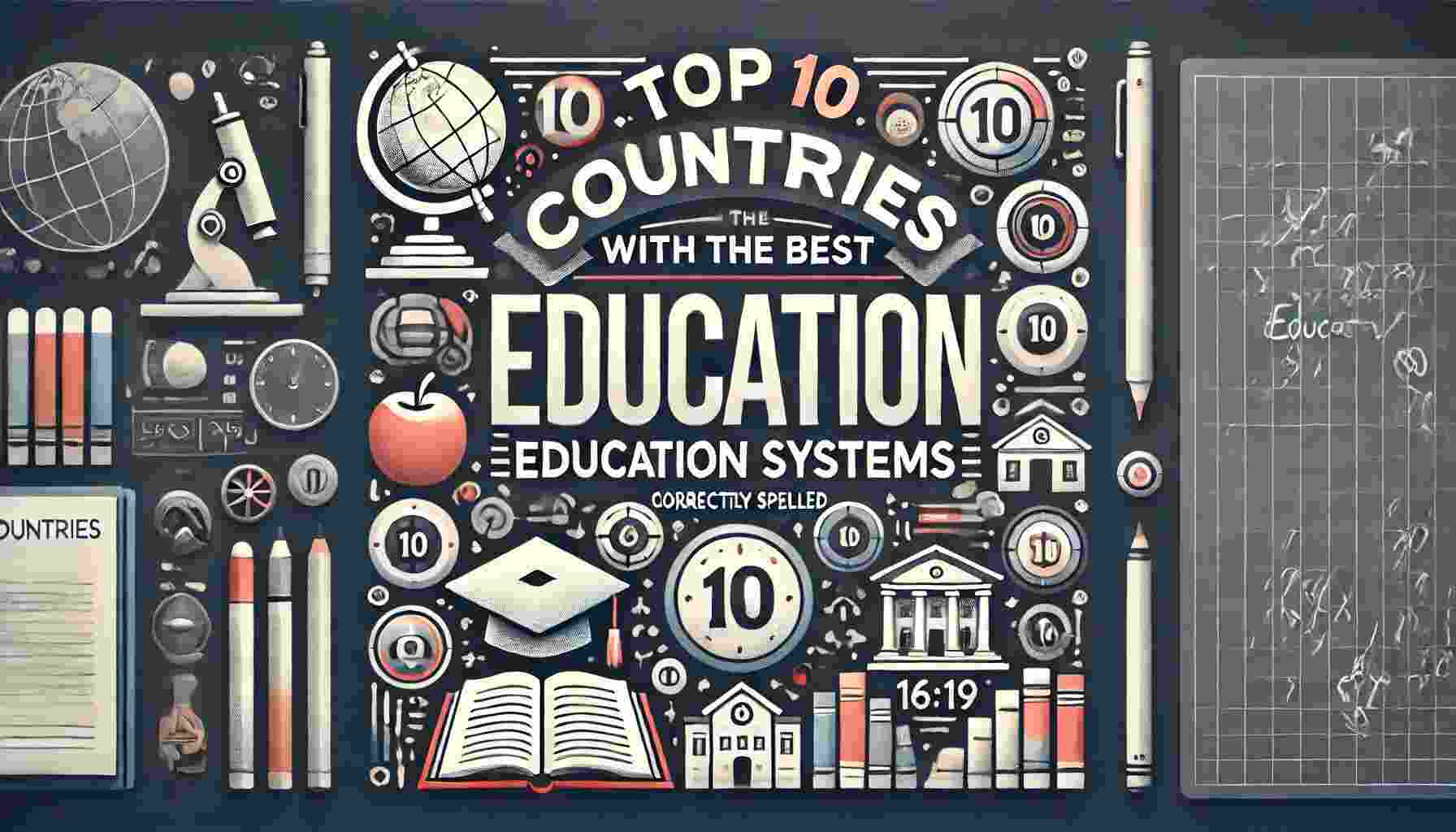Education systems worldwide are compared according to criteria like percentage of literate population, curriculum excellence, teachers’ preparedness, performance of students in global assessments and public expenditure in education. So, let’s dive deeper and explore ten of the countries that always seem to score well in these measures – and what makes their approach different.
1. Finland
✅ Why It Stands Out:
▶ Pc students get little to no homework, and aren’t not tested with standardized exams until later on.
▶ Instructors are absolutely certified and Mater degree as original.
▶ The system focuses on creative learning. critical thinking and the whole student experience.
▶ Education opportunities are available to everyone, including the gaps of socioeconomic disparities.
✅ Key Strengths:
▶ Excellent early education programs.
▶ A national priority for learning from the beginning of life.
▶ Teachers are granted a lot of autonomy over their classrooms.
2. South Korea
✅ Why It Stands Out:
▶ Scholastic excellence awakens and the character of the student.
▶ Entrance into universities is selective and deeply matters.
▶ Private tutoring is common and very relied.
▶ The gov invests serious in educational infrastructure.
✅ Key Strengths:
▶ Students perform well nightly in world math, read, and science tests.
▶ Teachers are respected and well-paid.
▶ Classrooms are technologically advanced.
3. Singapore
✅ Why It Stands Out:
▶ Famous for a rigorous curriculum that develops good problem-solving skills.
▶ Government focusses teacher development and quality of education.
▶ Nr.1 in STEM Education worldwide.
▶ + Strong emphasis to acquire both English and mother tongue.
✅ Key Strengths:
▶ Tops international tests such as PISA and TIMSS.
▶ Introduces tech-based learning early.
▶ Teachers build a village that works closely with policy makers to improve education.
4. Canada
✅ Why It Stands Out:
▶ Public shools free and well funded.
▶ Much of the standardized testing has been eliminated in many of the regions.
▶ Good reputation for offering inclusive and diverse lesson environments.
▶ World recognized by higher educational institutions.
✅ Key Strengths:
▶ High graduation rate and literacy.
▶ Teachers get ongoing back-up and up-skilling.
▶ On the homepage, the focus is on each student’s individual needs.
5. Japan
✅ Why It Stands Out:
▶ Kota Kaiju rhymes trace is offered to students in greatest structured and disciplinary environment.
▶ Early child education is our biggest priority.
▶ Recently, a lot of moral education & cooperation is done.
▶ School days can be long and full with after school activities.
✅ Key Strengths:
▶ World modeling in Math, and also in Science, students emerge with great credits.
▶ Discipline and dedication for hard work is part of who they are.
▶ Parents are actively engaged in childrens learning programme.
6. Netherlands
✅ Why It Stands Out:
▶ Numerous types of schools are available for students to select what works best for them.
▶ Learning words is meant to support self-governance and critical thinking.
▶ Rote memorization is replaced by deeper understanding.
▶ Students enjoy an exceptionally high level of student satisfaction and happiness.
✅ Key Strengths:
▶ Equal opportunity access to education for all, regardless of where you came from.
▶ Good pathways for vocational pathways.
▶ Teachers know and utilize creative and inventive methods.
7. Switzerland
✅ Why It Stands Out:
▶ Alternates academic study with hands-on apprenticeship training.
▶ Provides substantial professional development opportunities for teachers.
▶ Intimate classes ensure individualized instruction!
▶ Universities are renowned for research and excellence.
✅ Key Strengths:
▶ Students get on to jobs smoothly.
▶ Public funding guarantees quality everywhere.
▶ Education is all about practical skills and jobs.
8. Australia
✅ Why It Stands Out:
▶ Combination of academic and vocational knowledge.
▶ Nurtures creative and forward thinking.
▶ Teacher turns out & also super racket.
▶ favoured destiny of the international students.
✅ Key Strengths:
▶ Students make sound progress in reading, writing and mathematics.
▶ Public schools are well-supported.
▶ The curriculum is globally faced and diverse.
9. Germany
✅ Why It Stands Out:
▶ Famous for its work-oriented technical training.
▶ Universities provide free education – including international students.
▶ Students get career counseling since the start of their education.
▶ Government takes an active role in financing and ruling education.
✅ Key Strengths:
▶ Training is very practical and employment orientated.
▶ Students are highly job-prepared.
▶ Projects have engineering and technical training as a major focus.
10. United Kingdom
✅ Why It Stands Out:
▶ Birthplace of famous med schools like Oxford & Cambridge.
▶ Schools have an academic format filled with demands.
▶ Teachers undergo extensive training.
▶ Students are capable of thinking critically and intensely.
✅ Key Strengths:
▶ Literacy and numeracy standards are high.
▶ National curriculum produces uniform excellence in education
▶ Degrees are internationally respected.
Final Thoughts
Each of these countries selects a divergent route to high-quality education, whether it is the child- centered methodology … South Korea’s emphasis on discipline, or, Germany’s hands-on training. But one thing they all have? A profound belief in investing in teachers, supporting students, and building their systems for the generations yet to come.
